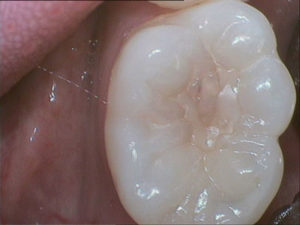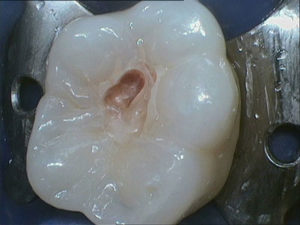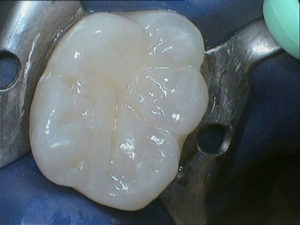A common procedure, dental fillings are performed in order to restore damaged teeth to full function. In general, fillings involve removal of decayed material from within the tooth, thorough cleaning of the cavity and then filling it with any one of several materials including composite resin, glass ionomer cement (GIC), or amalgam.
The best material for your needs will depend on many factors including size and shape of the cavity, location in the mouth, cosmetic considerations, cost preferences, and oral environment (e.g. dry mouth).
Composite Resin Fillings
Composite resin is a plastic-based tooth coloured filling material that has been used in dentistry for decades. These materials are constantly being researched and upgraded, and their colour, durability, and tooth bonding strength has vastly improved in recent times.
Composite resin is available in a wide range of shades and can be closely matched to the natural colour of your teeth. It is bonded onto the tooth using a series of strong adhesive agents. During placement, the resin has a soft putty-like consistency so that it can be precisely sculpted and moulded. Once it’s in place, the filling is rapidly hardened by a blue light which sets the filling to full strength in a matter of seconds.
Composite resin can be used to fill both front and back teeth.
 Tooth with a failed restoration and decay beneath the surface |  Decay exposed during the filling procedure |  Tooth restored with composite resin after all decay removed |
Composite Resin Bonding
The term ‘Composite Resin Bonding’ is sometimes used to describe the aesthetic placement of this material onto the surface of teeth – usually to correct defects such as chips, gaps, surface irregularity or discolouration. Composite Resin Bonding may refer to Composite Resin Veneers (which covers the front surface of the tooth) or to a situation where a chipped corner of the tooth is repaired. To see the before and after results for yourself, browse the Preventive Dentistry composite resin bonding gallery.
Like any material, composite resin does have limitations and is generally not recommended for very large restorations. In instances where composite resin is not suitable, tooth coloured alternatives include porcelain veneers, inlays, onlays, and crowns.
Glass Ionomer Cement (GIC) Fillings
GIC is a tooth coloured filling material that is useful for certain applications. Glass Ionomer Cement fillings are not as strong, and do not come in as wide a range of shades compared to composite resins. They are generally useful for restorations that are close to or underneath the gum as they are not as moisture-sensitive as composite resins during placement. GICs can be used as temporary or provisional restorations.
GICs have the benefit of releasing small amounts of fluoride thus giving the surrounding tooth structure some protection against recurrent decay.
Dental Amalgam Fillings
Dental amalgam has been one of the most consistently reliable tooth filling materials. It’s a strong metal alloy composed primarily of silver, tin, copper and mercury. Due to its unaesthetic grey/silver appearance and recent improvements in composite resin technology, the use of amalgam is declining.
Prior to the placement of an amalgam filling, the components come pre-loaded in a capsule and are mixed together for a few seconds by a specialised machine. The resulting mixture is soft and can be placed into the cavity and shaped – this then hardens over time. Unlike composite resin, dental amalgam does not actively bond to the tooth.
In recent years, concerns have been raised over the safety of dental amalgam as it has been claimed that small amounts of mercury can be released from the amalgam over time and absorbed into the bloodstream.
Fortunately, a huge amount of research has consistently shown that the amount of mercury released by amalgam fillings is negligible. To date there is no conclusive evidence to prove that dental amalgam leads to health problems and the current stance of the Australian Dental Association is that dental amalgam is safe to use.
Sometimes an amalgam restoration will be more functional and provide better longevity than a composite resin restoration. However, many people prefer to have tooth coloured restorations, and we will use these materials whenever possible.
Amalgam restorations are rarely used nowadays, however, if you do not wish to have any amalgam restorations please discuss this with one of our dentists.
For enquiries, appointments, or more information about getting dental fillings at Preventive Dentistry contact us today.
